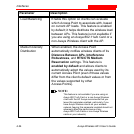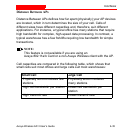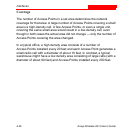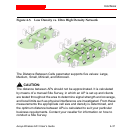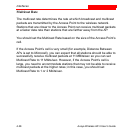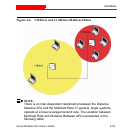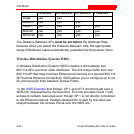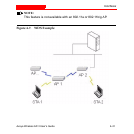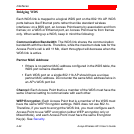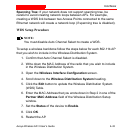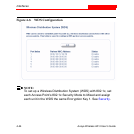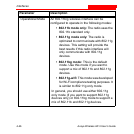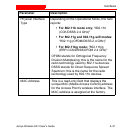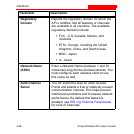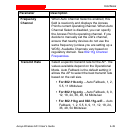
Interfaces
4-42 Avaya Wireless AP-3 User’s Guide
Bridging WDS
Each WDS link is mapped to a logical WDS port on the 802.11b AP. WDS
ports behave like Ethernet ports rather than like standard wireless
interfaces: on a BSS port, an Access Point learns by association and from
frames; on a WDS or Ethernet port, an Access Point learns from frames
only. When setting up a WDS, keep in mind the following:
Communication Bandwidth: The WDS link shares the communication
bandwidth with the clients. Therefore, while the maximum data rate for the
Access Point’s cell is still 11 Mb, client throughput will decrease when the
WDS link is active.
Partner MAC Address:
• If there is no partner MAC address configured in the WDS table, the
WDS port remains disabled.
• Each WDS port on a single 802.11b AP should have a unique
partner MAC address. Do not enter the same MAC address twice in
an AP’s WDS port list.
Channel: Each Access Point that is a member of the WDS must have the
same Channel setting to communicate with each other.
WEP Encryption: Each Access Point that is a member of the WDS must
have the same WEP Encryption settings. WDS does not use 802.1x.
Therefore, if you want to encrypt the WDS link, you must configure each
Access Point to use WEP encryption (either WEP encryption only or
Mixed Mode), and each Access Point must have the same Encryption
Key(s). See Security.



